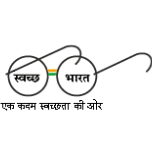- What are labelled compounds?
-
Labelled compounds are compounds in which one or more of the atoms of a portion of the molecules is replaced with or substituted by a detectable quantity of stable or radioactive isotope(s) of the elements present in them chemically, enzymatically or biosynthetically, using suitable precursors, reagents, reaction schemes and procedures. The compounds can be labelled at the specific positions (1,2 or ?, ?, etc.) or generally labelled (denoted by 'G') or uniformly labelled (denoted by 'U').
- What are the applications of labelled compounds?
-
The isotopically labelled compounds have numerous and varied applications as tracers. They are versatile research tools, which can be advantageously employed in studies pertaining to chemistry, biology, medicine, agriculture, biotechnology and genetic engineering. Of late, there has been an upsurge of interest and activities amongst researchers, especially in Life Sciences to study the various fundamental phenomena, hitherto not unravelled fully, involving in the synthesis, uptake, fate and function of amino acids, polypeptides, proteins, nucleic acids and their components (DNA & RNA), fatty acids (lipids), carbohydrates (sugars), prostaglandins, steroids, pheromones, neurotoxins, anti-aging compounds and a multitude of various other compounds of interest. For obtaining metabolic and pharmaco kinetic data, a widely used method, often the method of choice, is that of radio labelling the compound to be studied. This is mainly due to the fact that pico moles to femto moles of a substance in question can be detected and quantitated using this technique with comparative ease and precision. The tables 1 & 2 show some of the important applications of labelled compounds and labelled biomolecules in different disciplines.
- Important applications of labelled compounds
-
Field of Research Nature of applications Agriculture Plant physiology, crop improvement, plant nutrition and metabolism, pesticide management, mechanism of photosynthesis, plant morphogenesis, etc. Animal Husbandry Dairy research, biochemistry of lactation, animal physiology, etc. Biochemistry Studies of life processes at cellular levels, biosynthesis of proteins carbohydrates, lipids, steroids, nucleic acids, etc., metabolic pathways, transmethylation studies, enzymatic synthesis of RNA & DNA, etc Entomology Insect metabolism Environmental research Residue studies, pollution and its control Enzymology Radiometric assay of enzymes, important metabolites such as ATP, biogenic amines, etc. Fisheries Biological productivity in sea water, etc. Forensic sciences DNA finger printing, paternity tests, investigations and proof on criminals, etc. Medicine Drug metabolism, Radio immuno assay, cancer research and chemotherapy, contraceptive research, drug development, radio receptor assay, etc. Molecular Biology Recombinant DNA technology, genetic engineering, Transcription and translation mechanism of DNA ? RNA ? Protein. Nutrition Utilisation of dietary components Organic Chemistry and other branches of chemistry Reaction mechanism studies, Reaction kinetics, biogenesis, etc., self-radiation decomposition (auto radiolysis), etc. - Applications of Labelled Biomolecules
-
Field of Research Nature of applications Basic Sciences Research 5' - & 3' - End labeling of nucleic acids, Sequencing of nucleic acids, Nucleic acid hybridization, Making of labelled hybridization probes, Gene cloning, Studies on mechanism of DNA repair and DNA replication, Transcription of genetic message to RNA, Translation of genetic information from RNA to protein. Medical Sciences Diagnosis of genetic disorders such as thalassemia,sickle cell anaemia and genetic muscular dystrophy. Identification of specific genes like onco genes.Screening of population for infection by bacteria, fungus and virus using labelled probes. Human gene mapping. Agriculture Engineering plant cells to introduce desired characteristics such as yield, nutritional value, stress tolerance, etc. (Genetically modified-GM) Development of plants resistance to frost and herbicides. Development of plants resistance to pests. Biological nitrogen fixation. Industry Development of suitable microbial systems for the industrial production of antibiotics, vaccines, interferons, amino acids, alcohols, growth hormones, etc. - What are nucleotides ?
-
Nucleotides are the basic unit of nucleic acids just as aminoacids are the basic unit of proteins and monosaccharides (carbohydrates) are of polysaccharides (sugars). Nucleotides are obtained on hydrolysis of deoxyribonucleic acid (DNA) and ribonucleic acids (RNA) under controlled conditions. They essentially contain a phosphate group, ribose or deoxyribose (pentose) sugar and purine (adenine or guanine) or pyrimidine (Cytosine, uracil or thymine) nitrogenous base attached together in a specific well defined way. The five important ribonucleotides are adenylic acid, guanylic acid, uridylic acid, cytidylic acid and thymidylic acid.
- What are nucleosides ?
-
A heterocyclic nitrogenous base- a purine (adenine or guanine) or pyrimidine (cytosine, uracil or thymine ) in N-glycoside linkage with a pentose ( ribose or deoxyribose ) sugar is called a nucleoside. The five important ribonucleosides are adenosine, guanosine, uridine, cytidine and thymidine. In short, a base linked to a sugar is called a 'nucleoside' and when a phosphate group is added, the base- sugar-phosphate is called a 'nucleotide'.
- What are cold molecular biology kits ?
-
Molecular biology 'cold' kits (as they do not contain any radioactive material) are ready-made kits, which contain all the materials; chemicals and biochemical components required for readily carrying out the specified reaction for number of experiments. They can be employed in conjunction with radio-labelled products (to obtain radiolabelled DNA / RNA probes) or with non-radioacive products (to obtain fluorescent or chemiluminescent labeled DNA /RNA probes). e.g. using a Nick translation kit in conjunction with a ? labelled 32P or 33P deoxyribo nucleotide, one can introduce radioactively labelled nucleotides into DNA 'in vitro'.
- What are synthetic oligonucleotides ?
-
Synthetic oligonucleotides are single-stranded DNA fragments assembled from mononucleotide units by chemical synthesis according to a defined sequence and are generally 20-30 base long (i.e. low molecular weight). The base sequence is easily programmed in the computer of the gene assembler machine, which then determines the addition of reactants in the desired order. Synthetic oligonucleotides (DNA primers) are widely used in the study of genes, especially by researchers of 32P and 35S biomolecules in reactions such as DNA sequencing, polymerase chain reaction (PCR), etc.
- What is the function of 'permaluci' (PLC) nucleotide formulation ?
-
'Permaluci' nucleotide formulation contains a secondary stabilizer, which helps in restoring the stability of the 32P & 33P labelled nucleotides at ambient temperatures and a red-coloured dye to impart the dispensed sample solution better visibility.












